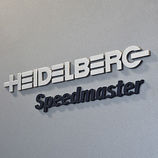Online support HOTLINE: 84-2439437063
|
Why Printed Books Will Never Die(11/06/2016)Measured en masse, the stack of "books I want to read" that sits precariously on the edge of a built-in bookshelf in my dining room just about eclipses 5,000 pages. The shelf is full to bursting with titles I hope to consume at some indeterminate point in the future. It would be a lot easier to manage if I just downloaded all those books to an iPad or Kindle. None are hard to find editions that would be unavailable in a digital format, and a few are recent hardcover releases, heavy and unwieldy. But there's something about print that I can't give up. There's something about holding a book in your hand and the visceral act of physically turning a page that, for me at least, can't be matched with pixels on a screen. Yet the writing appears to be on the wall: E-books are slowly subsuming the printed format as the preferred vehicle on which people read books. E-books topped print sales for the first time in 2011, a trend that continued into 2012. Just this month, Bexar County, Texas announced plans for the nation's first electronic-only library. A recent study from Scholastic found that the percentage of children who have read an e-book has nearly doubled since 2010 to almost half of all kids aged 9 to 17, while the number who say they'll continue to read books in print instead of electronically declined from 66% to 58%. The hits keep coming. For those who prefer their books printed in ink on paper, that sounds depressing. But perhaps there is reason to hope that e-books and print books could have a bright future together, because for all the great things e-books accomplish — convenience, selection, portability, multimedia — there are still some fundamental qualities they will simply never possess. Books have physical beauty.
That's not to say that electronic books can't be beautiful — as a medium, e-books are still new and designers have yet to fully realize their potential. But for paper books, we're already there. As Craig Mod points out in his essay "Hacking the Cover," the book cover evolved as a marketing tool. It had to grab your attention from its place on the shelf. For that reason, the best designed covers were often beautiful art pieces. Not so in the digital world. "The cover image may help quickly ground us, but our eyes are drawn by habit to number and quality of reviews. We’re looking for metrics other than images — real metrics — not artificial marketing signifiers," he wrote. And though that might eventually free book designers to get more creative with their designs, you can't display a digital book, even if you wanted to. Any electronic book that boasts beautiful design, does so only ethereally. Author Joe Queenan, in a Wall Street Journal opinion piece, argued that e-books are great for people who care only about the contents, have vision problems or other physical limitations or who are ashamed of what they're reading. But for people who truly love books, print is the only medium that will satisfy. "People who need to possess the physical copy of a book, not merely an electronic version, believe that the objects themselves are sacred," he wrote. "Some people may find this attitude baffling, arguing that books are merely objects that take up space. This is true, but so are Prague and your kids and the Sistine Chapel." Web entrepreneur, designer and novelist Jack Cheng, who recently funded the printing of his book through Kickstarter, told me that printed books just offer a more robust experience to the reader. "I feel like with e-books, you often just get a meal on the same white plate as all the other meals," he mused. "But a nice hardcover is like having a place setting, having dinnerware selected to suit the food. The story is still the main thing you're there for, but the choices around it — the paper stock, the way the book is typeset, the selection of fonts — they add their own subtle flavors to the experience of that story." Books have provenance. Your favorite books define you, and digital versions don't seem to impart connections that are quite as deep. Queenan again: Books as physical objects matter to me, because they evoke the past. A Métro ticket falls out of a book I bought 40 years ago, and I am transported back to the Rue Saint-Jacques on Sept. 12, 1972, where I am waiting for someone named Annie LeCombe. A telephone message from a friend who died too young falls out of a book, and I find myself back in the Chateau Marmont on a balmy September day in 1995. A note I scribbled to myself in "Homage to Catalonia" in 1973 when I was in Granada reminds me to learn Spanish, which I have not yet done, and to go back to Granada. This piece of the experience doesn't translate to the electronic format. Someday in the distant future, maybe David Eggers' Kindle will be sold by Bauman Rare Books on Madison Avenue, but it's unlikely that digital books will ever be personal artifacts the way that their physical counterparts can be. "I think print and paper has a lasting value that people appreciate. Pixels are too temporary," said Praveen Madan, an entrepreneur on the Kepler's 2020 team, via email. Madan and his cohorts are attempting to reinvent the business model for independent bookstores, including ways to sell and offer services around e-books. "Books have been around for a very long time and people have a deeper relationship with some books than most digital content," he said. Printed books are collectible. They possess the quality of scarcity, which means that your copy is unique on some level. For readers who truly love a particular book, an electronic facsimile is not an adequate replacement for owning a physical copy. "There are books that I need bound and sitting on my shelf. I need a copy of Fahrenheit 451. That book is important to me," author Rob Hart, the website administrator for digital imprintMysterious Press and class director at LitReactor, told me. "Digital technology is funny — you own an e-book, but you don't ... You're paying for the right to access data." Cheng has also felt the draw of books as collectible objects. "Personally I've gone out and purchased hardcovers of books I first read on my Kindle because I wanted them in a more tangible form," he explained. "Having a hardcover on my shelf is like having a print by one of my favorite artists on the wall." "Having a hardcover on my shelf is like having a print by one of my favorite artists on the wall." He predicts that print might have a future similar to vinyl. "The physical artifacts are beginning to feel more precious, more like gifts. And I can see publishing going the same way," he said. "Maybe what we'll lose to digital publishing are the cheaply produced mass market printings on poor quality paper. And what we'll gain is a new appreciation for well-designed, higher-quality hardbacks, like the ones folks at The Folio Society are putting out." In a surprising flip of the traditional publishing cycle, Random House's Doubleday recentlyannounced plans to print hardcover versions of E.L. James' bestselling 50 Shades of Greytrilogy, even though electronic and mass market paperback editions have already sold 65 million copies. Why? Reader demand. You just can't collect an e-book. Books are nostalgic. The PBS website MediaShift recently asked a group of book lovers in Chapel Hill and Durham, N.C. which they preferred: printed or electronic books? Those who preferred printed books cited things like the smell, the feel and the weight as reasons. "Paper books don't get replaced by e-books, because there's just part of the experience you can't reproduce," said one man. (Of course, nostalgia is generational.) But if e-books just replace mass market paperbacks, as Cheng predicts, will books become merely art pieces? Some pundits think so. Writing last year in Slate, Michael Agresta argued that printed books will only survive as art. Books are no longer a good "vessel for text," he wrote. "Bookshelves will survive in the homes of serious digital-age readers, but their contents will be much more judiciously curated. The next generation of paper books will likely rival the art hanging beside them on the walls for beauty, expense, and 'aura' — for better or for worse." In some ways, Agresta is correct. It would be smart to bet that print sales will continue to decline, while e-book sales will continue to rise. Most people will own fewer printed books, and those they do own may very well be beautiful collector's editions, like the 50 Shades hardcovers, meant for display. But it's a mistake to assume that this is a case of the MP3 replacing the CD, or the CD replacing the cassette. E-books are not simply a better format replacing an inferior one; they offer a wholly different experience. E-books are not simply a better format replacing an inferior one; they offer a wholly different experience. Brian Haberlin is one of the co-authors of Anomaly, an ambitious printed graphic novel, augmented by a smartphone app that makes animations leap off the page while you read. I asked why he chose to print the heavy, unwieldy and expensive hardcover edition. His answer was simple: "Because books are cool! I love print, always will. I love digital, always will. But they will continue to be different experiences. It’s a different texture, a different experience and that alone warrants their existence." Yes, Anomaly is one of those beautiful, collectible art pieces. But it also highlights why print is here to stay. The experience of reading Anomaly on your iPad is vastly different than the experience of reading the printed version. The story is the same, but the medium affects the way you read it. It's not totally unlike the difference between watching the movie version of Les Miserables and watching it performed live on stage. There may come a time when we look at electronic books and printed books as similarly divergent mediums. In a recent Fast Company column titled "The Future of Reading," author and comedian Baratunde Thurston made a compelling case for why books might just be better in electronic form. Superior annotation tools, easier discovery, interactive content and shared reading experiences are just some of the things made possible because digital publishing has allowed us to, as Thurston put it, network our words "and the ideas they represent." For Thurston, this is an either-or scenario. Digital books or printed books. And while he lamented our diminished attention spans — the result of distractions embedded in the digital format — he concluded that it's all worth it because of the great things e-books can do. But the choice between e-books and printed books is not a zero sum game. Print books do not have to disappear for e-books to flourish, and e-books don't have to be the only choice. "Printed books are for people who love printed books. Digital books are for those who love digital books," Haberlin told me. Maybe it's just that simple.
Other news
|
HTML Code









